 |
 |
 |
|
1952 1960 1968 1974 1981 2003 The Early Years: 1904 – 1952 Perspective from the Yearbooks 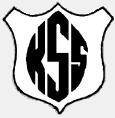
|
History of Kam HighKHS/KSS in the Munro Street building |
 | Information in this section was compiled by Gordon Lloyd, former principal of Kamloops Senior Secondary, 1975-1987. Credit is due Walter Harder for editing and posting the information on the web. Without his help, this project would still be on Gordon’s desk. |  |

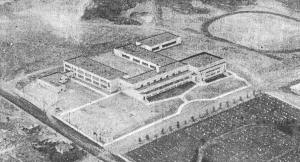 In September 1952 the new school opened its door to almost 1,000 students enrolled in grades 7 through 13 with a staff of 45. While the net population of Kamloops City had grown little during the years 1939 to 1949, KHS had continued to feel the squeeze with more students staying in school longer and Kamloops having an expanding number of young people. In the war years many grade 11 and 12 students had left school to join the forces. The Cameron Commission in 1945 greatly reduced the number of school districts. Students who had attended school in Westwold, Monte Lake, and other small districts for grades 7 and 8 were now bussed to Kamloops and expected to attend the High School. The Cameron commission had also recommended that districts plan comprehensive secondary schools sufficiently large to offer a wide selection of university and general program courses. From 1945 until the new school was opened, more and more classes were offered in portables on the KHS school grounds. PE classes continued at McGowan field and the KAA Hall and music classes were offered at the old Colombo Hall. By 1951 the School District had to make provision for grade 7 students, then part of the High School, to take their classes in North Kamloops and AE Perry Elementary schools.
In September 1952 the new school opened its door to almost 1,000 students enrolled in grades 7 through 13 with a staff of 45. While the net population of Kamloops City had grown little during the years 1939 to 1949, KHS had continued to feel the squeeze with more students staying in school longer and Kamloops having an expanding number of young people. In the war years many grade 11 and 12 students had left school to join the forces. The Cameron Commission in 1945 greatly reduced the number of school districts. Students who had attended school in Westwold, Monte Lake, and other small districts for grades 7 and 8 were now bussed to Kamloops and expected to attend the High School. The Cameron commission had also recommended that districts plan comprehensive secondary schools sufficiently large to offer a wide selection of university and general program courses. From 1945 until the new school was opened, more and more classes were offered in portables on the KHS school grounds. PE classes continued at McGowan field and the KAA Hall and music classes were offered at the old Colombo Hall. By 1951 the School District had to make provision for grade 7 students, then part of the High School, to take their classes in North Kamloops and AE Perry Elementary schools.
 The first referendum had failed to pass in 1948 and it was 1951 before the referendum passed and school planning began. It wasn’t until 1953 that the school auditorium was completed. Many citizens thought the new facility to be too expensive and extravagant, not to mention that the school (in their opinion) was built “away out of town”. Only the “war time houses” had been constructed east of Ninth Avenue and there were few homes south of Douglas Street. Until then school musical productions were offered in the Elks Hall on Seymour Street.
The first referendum had failed to pass in 1948 and it was 1951 before the referendum passed and school planning began. It wasn’t until 1953 that the school auditorium was completed. Many citizens thought the new facility to be too expensive and extravagant, not to mention that the school (in their opinion) was built “away out of town”. Only the “war time houses” had been constructed east of Ninth Avenue and there were few homes south of Douglas Street. Until then school musical productions were offered in the Elks Hall on Seymour Street.
 Criticism of the new school gradually subsided as people became aware of the building's fine features. The administration and classroom wing had a magnificent view of the city. The principal’s office had a private bathroom suite which was later removed to make way for a second vice-principal’s office. This was the first regulation gymnasium build in a Kamloops school that was large enough for all competitive sports as well as providing space for spectators. The main classroom wing was two stories. The Commercial/Science Lab. and Industrial Education wing was one story. There was a formal cafeteria with kitchen in the basement. The annual Christmas dinner was a treat for staff and students alike. The theatre, which seated over 750 people, provided suitable space for community as well as High School productions. This was the first large theatre to be constructed in Kamloops, with seating far exceeding the Capital Theatre on Seymour Street. A dormitory building for residential students was attached to the east wing classroom. About 24 resident students could be accommodated, thereby enabling students from outlying communities in the District to attend school in town. More importantly, it was believed that the construction of such a large school could easily accommodate all secondary students and the district’s building needs for many years.
Criticism of the new school gradually subsided as people became aware of the building's fine features. The administration and classroom wing had a magnificent view of the city. The principal’s office had a private bathroom suite which was later removed to make way for a second vice-principal’s office. This was the first regulation gymnasium build in a Kamloops school that was large enough for all competitive sports as well as providing space for spectators. The main classroom wing was two stories. The Commercial/Science Lab. and Industrial Education wing was one story. There was a formal cafeteria with kitchen in the basement. The annual Christmas dinner was a treat for staff and students alike. The theatre, which seated over 750 people, provided suitable space for community as well as High School productions. This was the first large theatre to be constructed in Kamloops, with seating far exceeding the Capital Theatre on Seymour Street. A dormitory building for residential students was attached to the east wing classroom. About 24 resident students could be accommodated, thereby enabling students from outlying communities in the District to attend school in town. More importantly, it was believed that the construction of such a large school could easily accommodate all secondary students and the district’s building needs for many years.
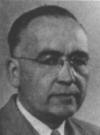 W. Gurney Principal |
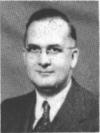 C. Wright Vice-principal |
 Miss Foord |
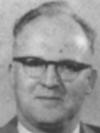 Mr. Potter |
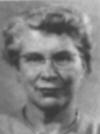 Miss Harrison |
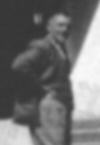 Mr. Aldworth |
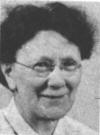 Miss Lawrence |
 Mr. Howard |
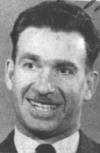 Mr. Knapp |
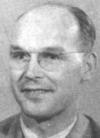 Mr. Jones |
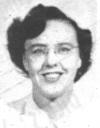 Miss Bradley |
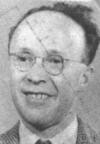 Mr. Morse |
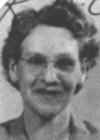 Mrs. Elder |
 Mr. McMurdo |
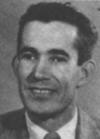 Mr. Kennedy |
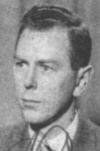 Mr. Campbell |
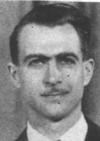 Mr. McMillan |
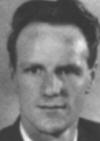 Mr. Lidster |
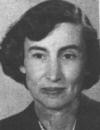 Miss McArthur |
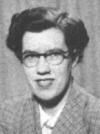 Miss Anderson |
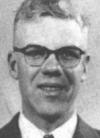 Mr. Cunningham |
 Mr. Hyslop |
 Mr. Stewart |
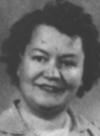 Mrs. Dundon |
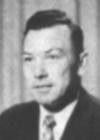 Mr. Duncan |
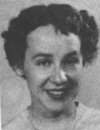 Miss Withler |
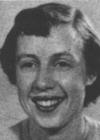 Miss Woodman |
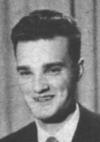 Mr. McKay |
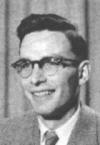 Mr. Knowles |
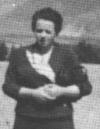 Mrs. Buckley |
 Miss Cocones |
 Mrs. Heatley |
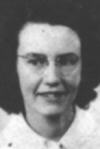 Miss McDonald |
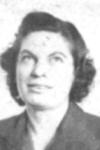 Miss. Swadling |
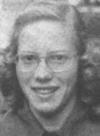 Miss Withers |
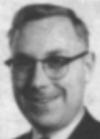 Mr. Barker |
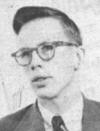 Mr. Ivison |
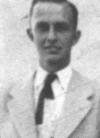 Mr. Lennox |
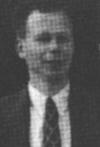 Mr. Marshall |
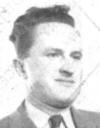 Mr. Riddle |
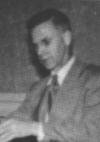 Mr. Tuck |
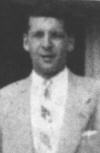 Mr. Turik |
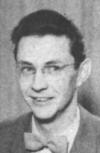 Mr. Weiker |
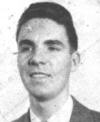 Mr. J. Wright |
| In July of 1953 Mr. Duncan was stricken with polio. He was a very popular teacher. The students and staff collected funds for a Duncan Fund and dedicated the 1954 yearbook to him. Mr. Duncan returned to teach at KHS and renovations to accommodate his wheel chair were made. One of the first overhead projectors seen in Kamloops was provided to assist his teaching. Mr. Duncan passed away a number of years later and there is a Duncan memorial scholarship given out annually in his memory. |
During that school year the school hosted the provincial girl’s Basketball Tournament. Jim Taylor was student council president and Gordon Lloyd the valedictorian for the graduating class of 1952-53.
| During the first year in the new building, part of the school was shattered. A student, evidently anxious to share the wonders of science with his parents and friends, stole a chunk of sodium from Mr. Aldsworth’s grade eight science class. On the way down the hall, the boy felt the chemical begin to react his skin. The boy rushed into the nearest boy's bathroom, flushed the sodium and boom!! The cubicle was shattered and the toilet totally destroyed. Fortunately the student escaped safely to deal with the wrath of his parents and school authorities. |
The new building was officially opened on April 22, 1953. Opening ceremonies included addresses from W.H. Gurney, principal; Mr. McArthur, School Inspector; Mr. G. Slater, chairman of the Board; Mayor Fitzwater; Brig. Bostock, rural trustee and Mrs. Rolston, Minister of Education. The school band and choir performed. The official name of the school was Kamloops Junior-Senior High School. See Official Opening.
As veterans returned and began to raise families, the school population once again began to increase rapidly. The new school easily accommodated the secondary population of 1951 but by the mid-1950’s the new KHS was beginning to feel the pressure of overcrowding. The population growth of Kamloops and area was accelerating, particularly among school-aged people and especially on the North Shore.
North Kamloops Junior Senior Secondary opened in 1956. Students who lived in North Kamloops and Fruitlands (the portion of the North Shore that received water from the Fruitlands Irrigation District) were expected to attend the north shore school. At first there was some resistance, but as the new school on the north shore established itself students began to willingly attend that school, beginning the tradition of friendly rivalry in athletics, fine arts and academic achievement between KSS and North Kamloops Junior Senior Secondary.
The expanding secondary school population on the south shore was accommodated through the construction of John Peterson Junior Secondary in 1959. Grade seven and grade eight students attended John Peterson and grade nine to grade thirteen students attended Kamloops Junior-Senior Secondary.
In 1960 the Chant Commission reported to the Government of BC. The Commission recommended that, in response to the western world’s reaction to Sputnik and the Russian Space program, greater emphasis be placed on science. Students needed good laboratories in which they could learn science empirically through actual experiments rather than just learning the theories.
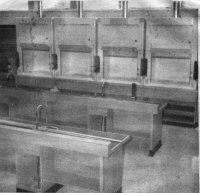 The impact of the Chant Commission had many direct effects on Kamloops Secondary School. For a good part of the 1965-66 school year, the west wing classes functioned in portables located in the "centre court" while major renovations took place. A second story was added in which 5 modern science laboratories were located. These laboratories were built to senior high (and almost university) standards, to replace the junior high labs on the lower floor. Science was to be emphasized. These new labs were indicative of the support for this concept given by the School Board and Kamloops Secondary.
The impact of the Chant Commission had many direct effects on Kamloops Secondary School. For a good part of the 1965-66 school year, the west wing classes functioned in portables located in the "centre court" while major renovations took place. A second story was added in which 5 modern science laboratories were located. These laboratories were built to senior high (and almost university) standards, to replace the junior high labs on the lower floor. Science was to be emphasized. These new labs were indicative of the support for this concept given by the School Board and Kamloops Secondary.
The lower wing, which had contained the old science laboratories and the typing room, was converted to classrooms to be used by typing classes and the "Occupational " program. Eventually, by the mid 1980's, part of the lower floor of the west wing was converted to a modern Business Education Centre and a photography laboratory that included a functional "dark" room.
The Chant Commission also recommended that Grade 7’s be accommodated in elementary schools throughout the province. The cost of the new science facilities and programs was provided in part by educating grade 7’s in elementary schools. This new grade configuration, along with the new science classrooms, had brought some relief to the KHS building. However, population growth in the school district continued to increase so rapidly that the Board began to plan for two new secondary schools. This expansion trend continued in Kamloops until 1982.
Brocklehust Secondary School opened on September 1, 1968, thereby relieving the Junior Secondary wing of North-Kamloops Jr.-Sr. Secondary which had operated on shift the previous year. The Junior-Senior Secondary School was also split that year into North Kamloops Senior Secondary and MacArthur Park Junior Secondary Schools.
In 1969 Valleyview Junior Secondary opened and offered grade eight to grade 10 programs for students who lived east of central Kamloops including Monte Lake and Westwold as well as accommodating residential students from the Kamloops Indian School. The Kamloops Indian school had stopped offering classes in June 1968. The facility continued to function for a number of years as a residence for school-aged students.
The provincial trend in the 60’s and 70’s was to senior secondary schools. As school population in the district increased, further adjustments to the number of grade ten students attending Kamloops Jr.-Sr. were made. The District schools were evolving into a senior secondary and junior secondary configuration.
Sahali Junior Secondary School opened in September 1974 and accommodated grade 8 to grade 10 students who lived in the western portion of the city and the district. This reduced the number of students attending John Peterson Junior, and especially the number of grade 10 students.
In September 1975, when grade ten students stopped attending Kamloops Secondary School the school was officially re-named Kamloops Senior Secondary. Former students, staff members and members of the community, however, continued to refer to the School as “Kam High”. In the late seventies students began to spell “High” as “Hi”, at first as a joke. This new spelling showed up on posters and pins advertising or recognizing student activities.
During the summer of 1981, KSS staff and students were treated to an extra two weeks of summer vacation. Major renovations were once again being done to the Munro Street Building. Time lost during the two weeks was made up by operating the school for an extra seventeen minutes a day from mid September until Christmas.
 The main reason for the renovations was to improve building safety. The old boilers were taken out, new roof top heaters were installed, fire-proof cement walls were constructed to separate each wing, a sprinkler system and intrusion alarm system installed.
The main reason for the renovations was to improve building safety. The old boilers were taken out, new roof top heaters were installed, fire-proof cement walls were constructed to separate each wing, a sprinkler system and intrusion alarm system installed.
The shops were upgraded; the legendary Chem lab in which Frank Potter, Anne Turner and Jim Hebden taught was upgraded. A modern Dark Room was constructed for Les Hall’s and later Wilf Scmidt’s classes; proper facilities for the Hearing Impaired Class were built, the Library was upgraded into a resource centre with back up meeting rooms and a security system.The fire safety walls required steel doors which could be closed should a fire take place. During the Fire Marshall’s inspection tour the school was told, and later warned, that the doors should be kept closed. The Worker’s Compensation inspector declared the doors should be kept open as there were visually impaired students and a visually impaired staff member in the school. Open or closed became a topic discussed during inspections over the next few years. It is reported that Dean Paravantes suggested the two inspectors “go into the parking lot, have it out and then return to tell him what to do”. The controversy was eventually resolved with the installation of a magnetic door holder which would release a spring door closer when a fire alarm was pulled anywhere in the building.
| In a tactful, non-offensive way, at the first assembly of the ’81-82 school year Students demonstrated in a skit how one could get through the security alarm without damaging ones future reproductive ability. |
Business Education rooms were modernized; a computer room was constructed on the second floor; a new art room was constructed at the north end of the east corridor; a teaching kitchen was built in the old cafeteria and the old kitchen converted to a weight training facility; improvements were made to the gym particularly better access to the gym from the corridor and better access to the Sagebrush Theatre was developed. For the first time in the history of the Munro Street building there was to be one common staff room in which all staff could meet, exchange ideas and relax. Before the renovations some staff members met upstairs in what was referred to by some as “The Ladies Staff room” and by others as “the non-smoker’s staff room”. The downstairs staff room had been the men’s staff room and was a room in which smoking was permitted.
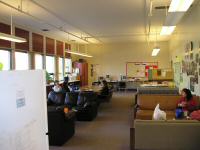 At the front of the school, the new staff room replaced Des Howard's original French classroom, which had been converted to a study hall and subsequently, at the time of the renovations, to the Art room. The upstairs staff room became a learning assistance centre and the lower staff room was converted into a book room.
At the front of the school, the new staff room replaced Des Howard's original French classroom, which had been converted to a study hall and subsequently, at the time of the renovations, to the Art room. The upstairs staff room became a learning assistance centre and the lower staff room was converted into a book room.
The Special Services Wing, in which the District’s Special Services Department operated, and which had formerly been the school’s dormitory, was also updated during these renovations. In 2003 this wing was currently been upgraded into a music room, allowing the previous music room to become part of the Sagebrush Theatre foyer.
By 1982 the District began to think in terms of having to provide for the educational needs of almost 20,000 students. Planning for new schools, hiring new teachers and buying new equipment became a challenge for the district. As it turned out, this challenge was far easier than the subsequent challenges from 1982 until the present when the numbers of students declined to just over 15,000 in 2003. When one realizes that the province funds the district on so many dollars for each enrolled student, the implications of a declining enrolment become clear.
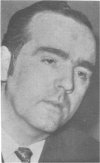
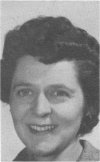
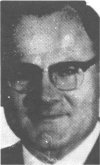
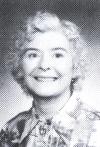 KSS was directly or indirectly involved in a number of significant changes in Kamloops and area. Tom Kerr had become the senior drama teacher at KSS in 1963. Tom and Marian Owens collaborated on yearly musical productions –The Sound of Music, Oliver, You’re a Good Man Charlie Brown, Wizard of Oz, Peter Pan, Westside Story and others. The fine tradition of school musical productions which Frank Potter had started in the 1930’s, and Archie McMurdo expanded in the 1940’s and 1950’s was in good hands. After Marian Owens and Tom Kerr left the school this tradition continued under the direction of Pam Allen assisted by Frank Hosek and more recently by Dick Dickens, Wilf Epp, Russ Noakes, Ken Scott and Rhonda Diaper.
KSS was directly or indirectly involved in a number of significant changes in Kamloops and area. Tom Kerr had become the senior drama teacher at KSS in 1963. Tom and Marian Owens collaborated on yearly musical productions –The Sound of Music, Oliver, You’re a Good Man Charlie Brown, Wizard of Oz, Peter Pan, Westside Story and others. The fine tradition of school musical productions which Frank Potter had started in the 1930’s, and Archie McMurdo expanded in the 1940’s and 1950’s was in good hands. After Marian Owens and Tom Kerr left the school this tradition continued under the direction of Pam Allen assisted by Frank Hosek and more recently by Dick Dickens, Wilf Epp, Russ Noakes, Ken Scott and Rhonda Diaper.
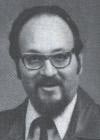 |
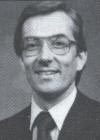 |
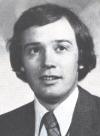 |
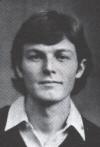 |
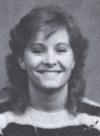 |
Not only did Tom offer an outstanding secondary drama program during the ten years he taught at KSS, through his leadership and direction the Western Canada Theatre Company was founded.
The 1953 KSS Auditorium was by 1970 deemed inadequate and the movement to dream of, plan for and then get a new Community Theatre began. The Sagebrush Theatre opened in 1978. This was a model of joint use by the community and school. The School District, City of Kamloops and Western Canada Theatre shared construction costs. The school was able to use the theatre for 100 school days and a limited number of evenings. Western Canada Theatre Company was able to use the Theatre for productions and a limited number of rehearsals and the facility was rented to community groups to provide funds to help with operating costs and with the purchase of equipment.
Adult Education was traditionally coordinated by KHS teachers. This task was done by a succession of KHS staff members and in 1963 Jack Harrison, while teaching part time at KSS, began to develop a more comprehensive adult education program. Classes for adults were offered by Ted Paravantes in the upper east wing of KSS. Jack Harrison worked with a number of provincial, district and regional committees and the plans to develop a Junior College began. Jack became the Director of Adult Education for the School District and then the first president of Cariboo College. By the early 1970’s the college opened in temporary quarters at the former Indian Residential School and KSS no longer offered grade 13 classes. When Cariboo College started to function students were able to take first year university courses in Kamloops. There was no longer a need to offer grade 13 at KSS.
While the district continued to respond to new demands for space and new programs during the latter half of the twentieth century, relative stability was experienced by those directly involved with the School. Academic, cultural and athletic programs continued to flourish. Good standards were maintained and graduates of the school did well at post secondary institutions and in their careers. The school continued to respond to new demands and expectations.
One of the great attributes of KHS and KSS was the tremendous community support demonstrated towards the school, its traditions and especially its students.
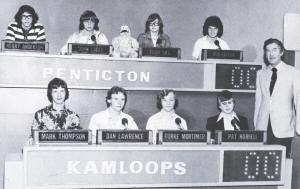 Many organizations, clubs and societies provided scholarships and bursaries to graduating students. One remarkable set of scholarships was provided through a bequest made by Mr. Benzie, a community blacksmith who committed his estate to scholarships given annually to KSS graduates.
Many organizations, clubs and societies provided scholarships and bursaries to graduating students. One remarkable set of scholarships was provided through a bequest made by Mr. Benzie, a community blacksmith who committed his estate to scholarships given annually to KSS graduates.
Provincially, the trend of having senior secondary schools with junior secondary “feeder” schools was re-examined following the publication of the Sullivan Commission in 1988. The changed demographics of Kamloops, costs of transporting students, provincial trends and other factors brought the School District to question whether or not maintaining senior secondary schools was in the long term interests of students and the district. The topic was widely debated and the District decided that each secondary school should offer grade 8 to grade 12 programs. Valleyview Junior, John Peterson Junior and Sahali Junior secondary schools became full secondary schools offering education from grade 8 to grade 12. Kamloops Senior Secondary again became Kamloops Secondary and offered programs to students who lived in the centre of Kamloops, the Aberdeen area, and to some students from outlying areas where transportation to the school was feasible.
Continued declining enrolments in the district during the first years of the new century forced trustees to once again examine school configurations. After much debate and public input, the Board decided to combine what had been known as Ecole Secondaire/ John Peterson Secondary School and Kamloops Secondary School. The name Kamloops High School which had changed over the years to “Kamloops Jr. Sr. High School”, “Kamloops Secondary School”, “Kamloops Senior Secondary School”, “Kamloops Secondary School (again)” was changed to South Kamloops Secondary School. The new school, with Vic Bifano as principal, began in Sept. 2003 in the facilities formerly occupied by John Peterson and KSS. The traditions developed at KHS/KSS and John Peterson SS are the foundation and legacy of South Kamloops Secondary School.
Summary
 In June 2003, Kamloops Secondary, formerly known as Kamloops Senior Secondary and Kamloops Jr.-Sr. High School and Kamloops High School were joined to become South Kamloops Secondary School. Over its 99 years KSS/KHS had developed many fine traditions and the students who attended the school demonstrated excellence in academics, athletics and the fine arts.
In June 2003, Kamloops Secondary, formerly known as Kamloops Senior Secondary and Kamloops Jr.-Sr. High School and Kamloops High School were joined to become South Kamloops Secondary School. Over its 99 years KSS/KHS had developed many fine traditions and the students who attended the school demonstrated excellence in academics, athletics and the fine arts.
You are invited to visit other links on this web site in which the accomplishments of former students, contributions made by the many outstanding teachers and administrators of the school are mentioned.
Please also visit the Reminiscences page in which former students, teachers and administrators recall their personal memories of times spent at a remarkable school.
| A glance through school records including the detention book of the 1930’s and staff meeting minutes indicate that many characteristics of adolescents remained constant; high energy, willingness to question and challenge authority, strong peer relationships etc. One interesting change indicated is the kind of activities which led to students having to serve detentions. In the ‘30’s a commonly recorded offense is “whispering in class”, “chewing gum”, and “laughing”. In the 40’s “wearing hob nailed boots” is a recorded offense. In the fifties there was much discussion about the right of students to wear jeans and hats in school. |
Many thanks are due those who worked tirelessly to post pictures from annuals and those who have so far contributed to this website. Walter Harder is particularly commended for his significant contribution and leadership in developing the website.
If inadvertent errors of fact are noted, please communicate these to the website so that corrections can be made.
It is recognized that it is not possible to record the significant contribution of the many support and teaching staff members who enhanced the development of the young people who attended the school. Nor is it possible to record the fine accomplishments of all of the graduates of the School. In an attempt to over come these shortcomings, former staff members, students and others are invited to submit short summaries to the School’s Website. If possible enclose a picture or two of activities or events.
Sincerely, | |
 | |
| Gordon Lloyd November 2003 |
